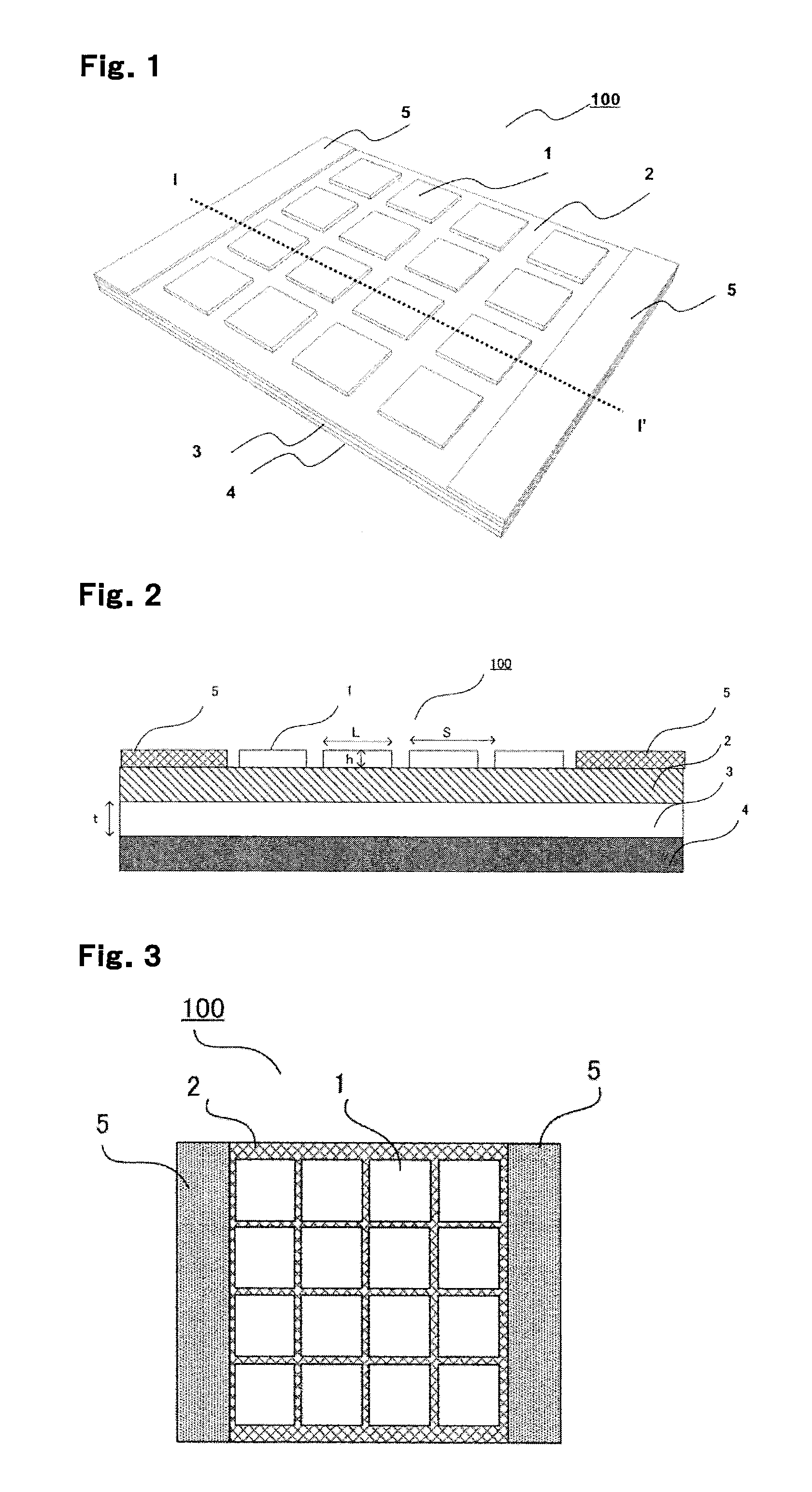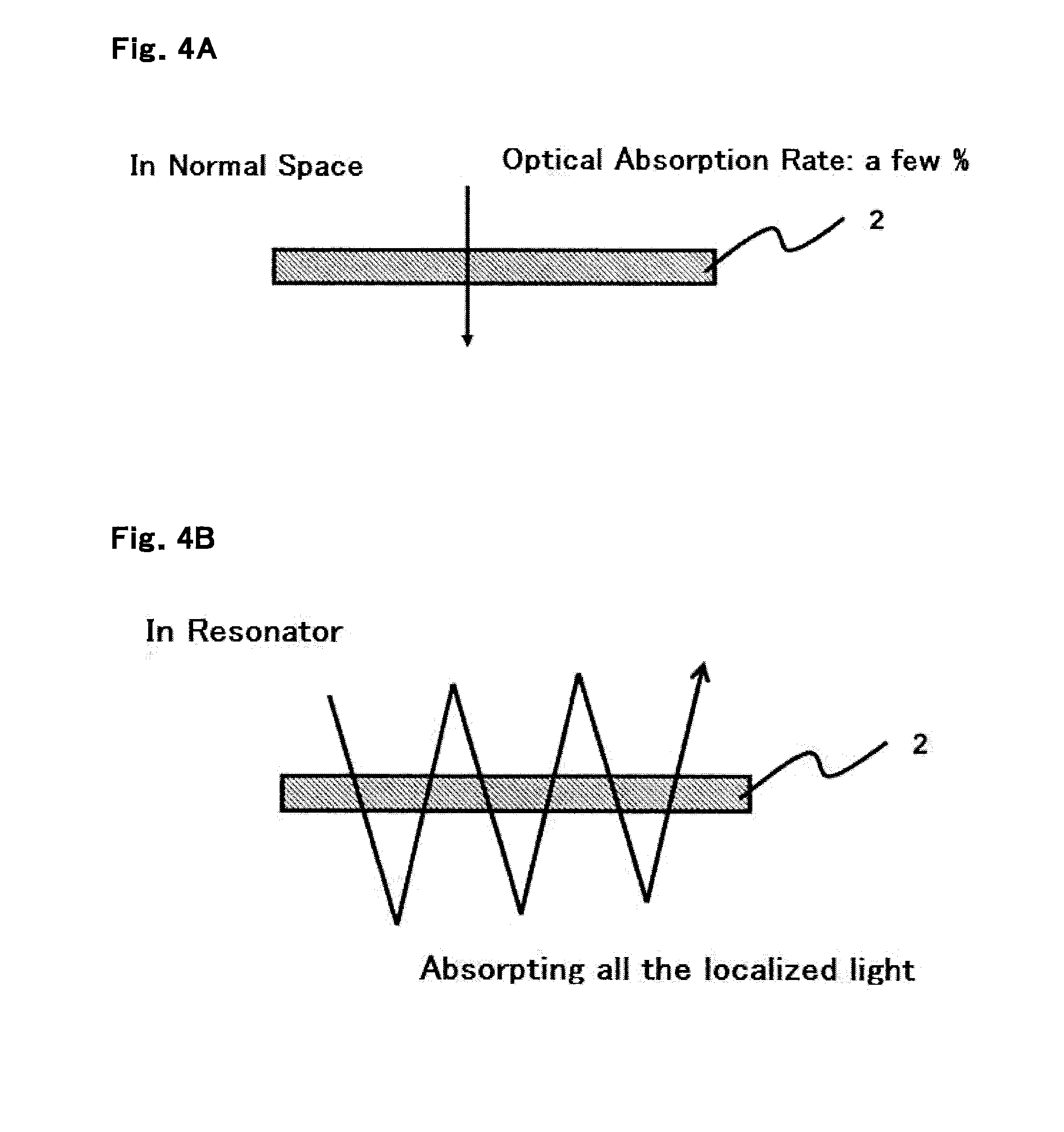Electromagnetic wave detector and electromagnetic wave detector array
a detector array and electromagnetic wave technology, applied in the field electromagnetic wave detector arrays, can solve the problems of inability to effectively acquire optical information as electromagnetic wave detectors, inability to use the optimum semiconductor of electromagnetic wave detectors, and inability to achieve the function of detecting the polarization of incident light in conventional electromagnetic wave detectors using graphene, etc., to achieve high-sensitivity photodetection and increase the effect of optical absorption ra
- Summary
- Abstract
- Description
- Claims
- Application Information
AI Technical Summary
Benefits of technology
Problems solved by technology
Method used
Image
Examples
embodiment 1
[0104]FIG. 1 is a perspective view of an electromagnetic wave detector according to Embodiment 1 of the present invention, the whole electromagnetic wave detector being denoted by 100. FIG. 2 is a sectional view of the electromagnetic wave detector taken along I-I′ in FIG. 1. FIG. 3 is a top view of the electromagnetic wave detector in FIG. 2 when viewed from an upper surface (also referred to as a “surface” or an “incident surface”).
[0105]As shown in FIGS. 1 to 3, and particularly, in FIG. 2, in the electromagnetic wave detector 100, a metal layer 4 is formed on a substrate (not shown), an insulating layer 3 having a thickness t is provided on an upper surface of the metal layer 4, and a graphene layer 2 is provided on an upper surface of the insulating layer 3. On the graphene layer 2, isolated metals 1 are arranged in a matrix form, each isolated metal 1 in a square shape having a length L in one side and a thickness h, so that periods of the isolated metals 1 in two orthogonal d...
embodiment 2
[0154]FIG. 13A is a perspective view of an electromagnetic wave detector 110 according to Embodiment 2 of the present invention. The electromagnetic wave detector 110 is different from the electromagnetic wave detector 100 according to Embodiment 1 in that the graphene layer 2 is not arranged in a sheet shape, but the graphene layer 2 is partly processed to be used as a graphene connection wiring 6. That is, the graphene layer 2 is provided in only lower parts of the isolated metals 1 and the electrodes 5, and in portions of the graphene connection wirings 6 that connect the isolated metals 1 and the electrodes 5.
[0155]The electromagnetic wave detector 110 shown in FIG. 13A can be obtained by forming the isolated metals 1, and then removing a part of the graphene layer 2 by a photoengraving step, for example. FIG. 13B is a conceptual view about the electric resistance value that is observed between two electrodes 5, in the electromagnetic wave detector 100 according to Embodiment 1....
embodiment 3
[0164]FIG. 15 is a perspective view of an electromagnetic wave detector according to Embodiment 3 of the present invention, the whole electromagnetic wave detector being denoted by 140. In the electromagnetic wave detector 140, the isolated metals 1 are connected in series by the graphene connection wiring 6 between two electrodes 5. In the electromagnetic wave detector 140 shown in FIG. 15, when a resistance value of the graphene layer 2 arranged below the isolated metals 1 is denoted by R1 and a resistance value of the graphene connection wiring 6 between the isolated metal 1 and the isolated metal 1 is denoted by R2, a resistance value R between the electrodes 5 when n isolated metals 1 are connected in series can be expressed as follows.
R=n×R1+n×R2
Therefore, the following relation is obtained.
RW=nR1W
[0165]That is, in the electromagnetic wave detector 140 shown in FIG. 15, stronger electric signal intensity for the light intensity of a specific wavelength can be obtained, and the...
PUM
 Login to View More
Login to View More Abstract
Description
Claims
Application Information
 Login to View More
Login to View More - R&D
- Intellectual Property
- Life Sciences
- Materials
- Tech Scout
- Unparalleled Data Quality
- Higher Quality Content
- 60% Fewer Hallucinations
Browse by: Latest US Patents, China's latest patents, Technical Efficacy Thesaurus, Application Domain, Technology Topic, Popular Technical Reports.
© 2025 PatSnap. All rights reserved.Legal|Privacy policy|Modern Slavery Act Transparency Statement|Sitemap|About US| Contact US: help@patsnap.com



